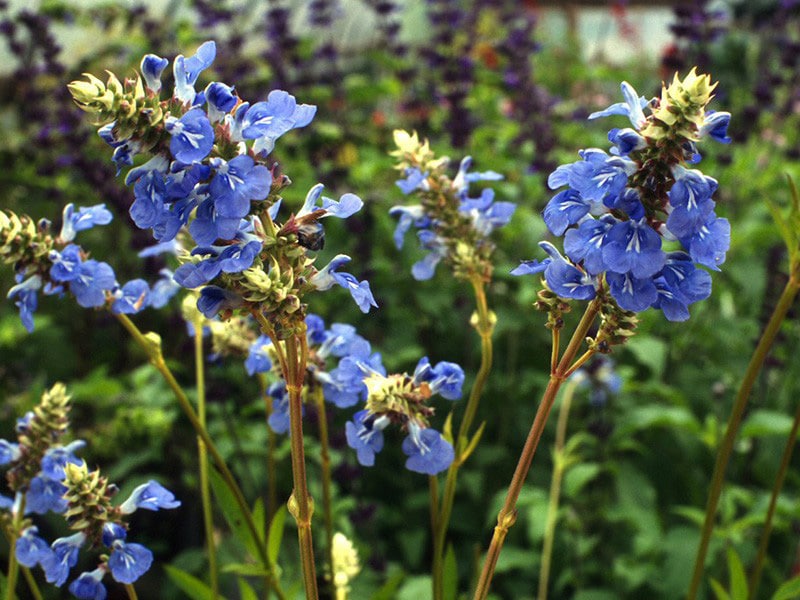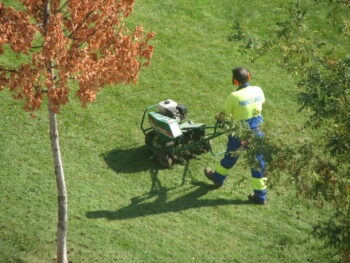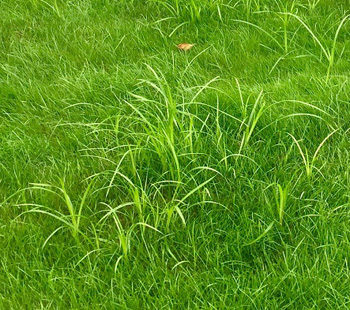Salvia is a beautiful, easy to grow perennial that’s popular among gardeners and landscapers alike. It has been used for thousands of years in everything from medicine to cookery and even spiritual ceremonies.
Salvia comes in many forms, including Salvia splendens (a type of sage), which is the most commonly grown variety. The flowers and leaves can be used in cooking or as an ingredient in herbal teas. However you choose to use your salvia plants, they’re sure to add color and beauty to your yard!
About Salvia
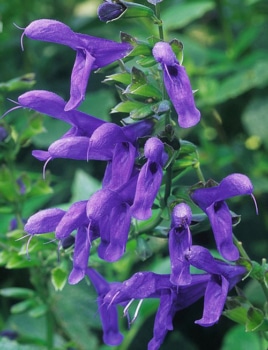
Salvia is a genus of flowering plants in the mint family Lamiaceae. They are known for their colorful flowers and striking leaves.
Colors vary from purple to green and are sometimes variegated. The name “salvia” comes from the Latin word for salvation or healing. This reflects their traditional use as healing herbs.
Salvia come from all over the world. They are found growing wild in most temperate regions (including North America). Most Salvia are shrubs or perennial herbs with square stems that grow 1-3 feet tall.
Some species have woody stems, while others remain herbaceous throughout their life cycle. There are many different species within this genus, but most have similar characteristics.
They’re normally perennial in their native environment but treated as annuals where winters are cold. Additionally, they have opposite leaves (two per node). Finally, flowers are arranged in whorls around an inflorescence axis.
A calyx tube is present but not inflated. Get river rock landscape rocks installed alongside your salvia plants. You won’t regret it.
How to Plant Salvia
Plant salvia in spring, summer or fall. The plant can take partial shade, but will do best in full sun. Plant it in well-drained soil that’s rich in organic matter and water regularly so the roots stay moist.
The ideal location for your salvia is an area with good air circulation, such as near a patio or deck where you can enjoy its fragrance while sitting outside on warm days and evenings.
Keep your salvia flowers trimmed and looking great. Hire us for shrub trimming services.
5 North Texas Salvia Species
There are many salvia species that can be found in North Texas. The following are five common species:
- Autumn Sage (Salvia greggii) – This is a popular salvia variety that produces bright red, pink, or purple flowers and can grow up to 3 feet tall and wide. It is drought-tolerant and prefers full sun.
- Mealy Cup Sage (Salvia farinacea) – This salvia variety produces blue or purple flowers and can grow up to 2 feet tall and wide. It is drought-tolerant and prefers full sun.
- Black and Blue Sage (Salvia guaranitica) – This salvia variety produces dark blue flowers and can grow up to 4 feet tall and 3 feet wide. It prefers moist soil and partial shade.
- Cedar Sage (Salvia roemeriana) – This salvia variety produces red flowers and can grow up to 2 feet tall and wide. It prefers shade and moist soil.
- Mexican Bush Sage (Salvia leucantha) – This salvia variety produces purple or white flowers and can grow up to 3 feet tall and wide. It prefers full sun and well-drained soil.
Growing Salvia
Salvia is a drought-resistant plant that requires very little maintenance. It’s easy to grow, and will thrive in partial shade. Salvia grows best in containers because they can be moved around easily and are portable if you want to bring them with you when traveling.
Salvia is an excellent choice for gardeners who have limited space, as it can be pruned to maintain a desired size (this will also keep the plant healthy).
Make your salvia plants shine at night as well as during the day. Check out our bistro lighting service page.
Watering Salvia
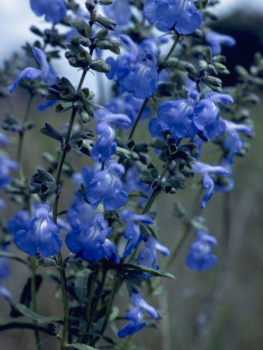
Salvia flowers are drought-tolerant and do not require frequent watering. However, they should be watered regularly to keep their soil moist and prevent wilting.
Watering your salvia in the morning will give the plant enough time to dry out before nightfall, which can cause mold or fungal growth on leaves and stems.
When you water at night, make sure that you don’t overdo it. The excess moisture will sit on top of the soil all night long instead of being absorbed into it like it would have been if you’d watered during daylight hours!
Simply feel around with one finger, if you’re unsure whether or not your plant needs water at any given moment.
If there’s no moisture left in its potting mix after five minutes of poking around inside there probably isn’t much left either way so go ahead with whatever action suits your situation best 🙂
Perfect Soil Conditions for Salvia
Salvia prefers a well-drained, sandy soil. To ensure that the plant does not suffer from over-watering, it’s best to use a pot with holes in the bottom for drainage. Salvia also needs full sun or at least partial shade (it can tolerate direct sunlight if you live in an area that has very mild winters).
If you’re growing your salvia indoors and want to keep it alive through winter, remember not to overwater them–they need less water during this time of year because they aren’t getting any rain or snowfall like they would outdoors!
Summary
Salvia flowers are beautiful and add a lot to your home. You should water them regularly in the morning, but not too much. Don’t put them in direct sunlight or they will burn quickly!
If you want to grow Salvia, it’s important to know how to care for them. You can do this by following some simple steps, like watering them regularly and making sure they have the right soil conditions. If you’re looking for a new way to add color and beauty to your garden, then salvia flowers are a great choice!

